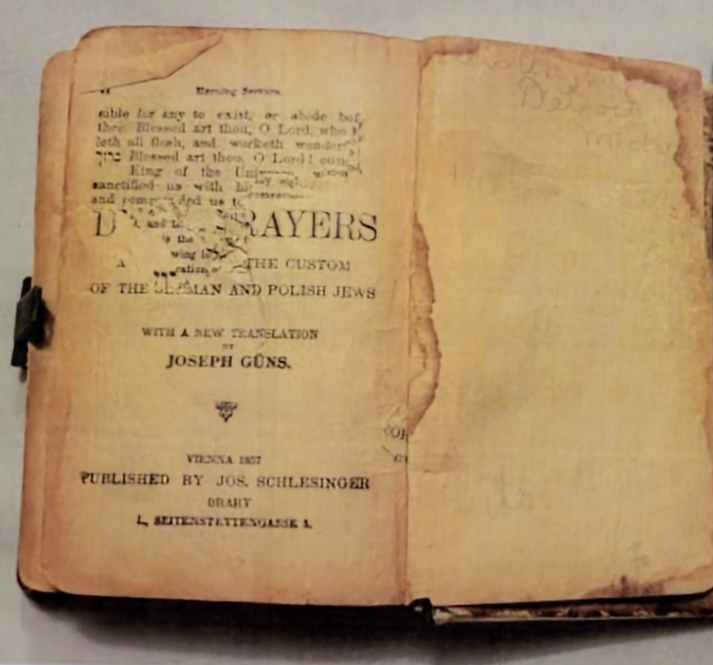How many of us have carried through our lives a treasured possession with which we will never part? Perhaps, like this well-worn and well-loved Siddur, it is an heirloom, passed down from father to daughter to granddaughter as links in di goldene keyt — Yiddish for “the Golden Chain” — of Jewish tradition.
This chain links each of us not only with each other, but with our customs and forebears all the way back to Abraham and Sarah. The chain crosses rivers, oceans, languages, and borders. But it does not simply exist: it is the sum of every choice made by every Jew throughout time to continue preserving and adapting our traditions and practices to new contexts.
In 1853, Rabbi Joseph Güns-Schlesinger, a scholar living in what was then the Austrian city of Pressburg — now Bratislava, the capital of independent Slovakia — made a choice to continue the Golden Chain. There, in the cobblestone streets where only five years earlier the 1848 revolution had briefly blossomed before being brutally stamped out, Schlesinger opened his eponymous Joseph Schlesinger Publishing House in order to provide high-quality editions of Jewish holy books — Haggadot, machzorim, siddurim — to Jews who desired them. Soon after opening, Schlesinger had enough business to open two new presses in Vienna and Budapest, the twin capitals of Austria-Hungary.
The volumes produced in Schlesinger’s factory were no ordinary siddurim. They contained every daily prayer a Jew is required to say, yes, but that was not all. Their covers were ornately decorated with bone or pearl inlays, gold-stamped lettering, and beautifully engraved silver plating. Schlesinger’s press didn’t only print them in Hebrew either. The esteemed Rabbi was a translator as well, and published bilingual English-Hebrew editions of the daily siddur for the rapidly growing English-speaking Jewish communities of England and the United States.
One of the books to come off of Rabbi Schlesinger’s Vienna press in 1857 was the aforementioned heirloom: daily prayers in Hebrew accompanied by the Rabbi’s very own English translation. At some point, somehow, the siddur made its way across the ocean to America, and eventually to Detroit, where it ended up in the hands of one Ellis Warren, perhaps as a Bar Mitzvah gift. In this way the siddur formed links in the Golden Chain — across the ocean and across language — for this young Jewish American to learn from the knowledge of his far-flung ancestors and stay wrapped within their traditions.
Nearly 170 years later, Schlesinger’s printing press is still active — miraculously! — albeit no longer in Vienna. In 1939, the rabbi’s great-great-grandson Akiva fled Budapest before the impending storm and settled in Tel Aviv, where the company adopted a new name: Sinai Publishing House.
This siddur is still well loved and appreciated by Ellis Warren’s granddaughter, Nina. You can see it and many other links in di goldene keyt at the Jewish Historical Society of Michigan’s upcoming exhibit: IN THE NEIGHBORHOOD: Everyday Life on Hastings Street, 1880-1930. On view at the Detroit Historical Museum’s Community Gallery from April 20 to July 14, 2024.


Comments
Sign in or become a Nu?Detroit member to join the conversation.
Just enter your email below to get a log in link.